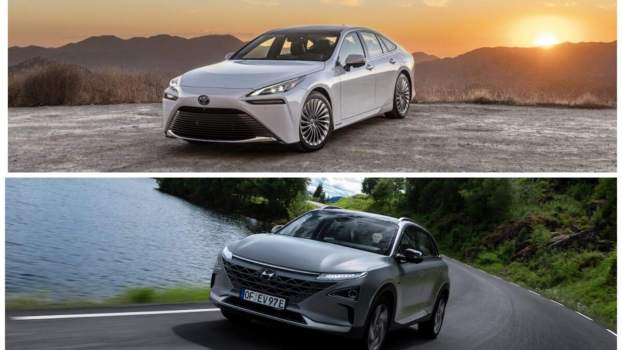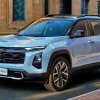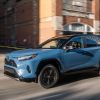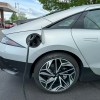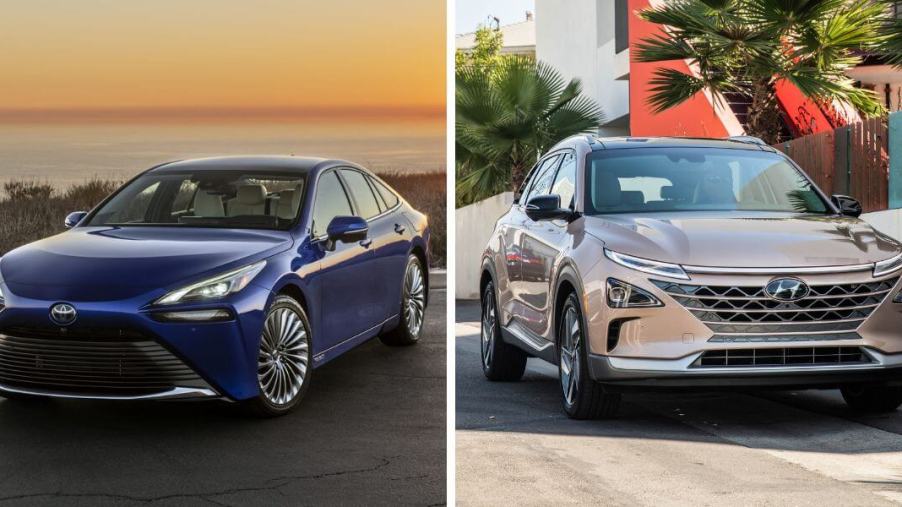
The Toyota Mirai and Hyundai Nexo Are 2 Fuel Cell Cars With Varying Popularity
The small segment of hydrogen fuel cell vehicles has unsurprisingly low sales numbers. It’s a niche market with currently only two entries, the Toyota Mirai and Hyundai Nexo. Additionally, California is the only place in the U.S. with decent refueling infrastructure for these types of cars. Still, between those two fuel cell vehicles, one drastically outsells the other.
The Toyota Mirai outsells the Hyundai Nexo
The Toyota Mirai sedan sells many more units than the Hyundai Nexo SUV. According to data on GoodCarBadCar, Toyota has sold 1,277 Mirai models so far in 2023. In the same time frame, the Hyundai Nexo sold only 97 units. Additionally, Mirai sales are growing, while Nexo sales are declining. The same data shows that sales of the Toyota fuel cell car are up 15%, while Nexo sales are down 56%.
There are many reasons why the Toyota Mirai outsells the Hyundai Nexo. One of the biggest reasons is the price; the Mirai starts at $49,500, and the Nexo begins at $60,135. However, the Mirai can go higher in the Limited trim, starting at $66,000, while the Nexo Limited starts at $63,585.
The Mirai also boasts a longer driving range than the Nexo. Depending on the trim, the Mirai’s range is 357-402 miles, which is better than most EVs. The Nexo’s range is still good, but not as good as the Toyota. It gets 354-380 miles depending on the trim. Lastly, another apparent reason the Mirai outsells the Nexo is a more extensive Toyota dealer network in California.
Advantages of the Nexo SUV
Although the Hyundai Nexo can’t beat the Toyota Mirai on range or price, the Hyundai has several meaningful advantages over the Toyota. The Nexo is an SUV with significantly more interior space than the Mirai. The Nexo boasts 38.6 inches of rear legroom, while the Mirai only has 33.1 inches of room. There’s also a considerable difference in cargo space. The Nexo has 29.6 cubic feet of cargo space behind the rear seats, while the Mirai’s tiny trunk only has 9.6 cubic feet of room.
These two hydrogen fuel cell vehicles have pretty similar horsepower ratings (161 hp for the Nexo, 182 hp for the Mirai), but the Nexo has significantly more torque. The Mirai produces 221 lb-ft of torque, and the Nexo makes 291 lb-ft. The Nexo also has a lower curb weight by about 400 pounds, making that extra torque even more fun.
Is a hydrogen-powered vehicle right for you?
If you’re looking for a hydrogen fuel cell vehicle to use as a practical daily driver, the extra interior space in the Nexo might make it a better pick. However, the Toyota fuel cell sedan has a lot going for it, namely a much lower starting price and a longer driving range. That extra range means a lot considering the scant refueling network compared to gas stations and EV charging stations in California.
If you’re waiting for more options, Honda has promised that a hydrogen fuel cell vehicle based on the Honda CR-V is on the way. If Honda gets that right, it could give fuel-cell cars the boost in popularity they need.
